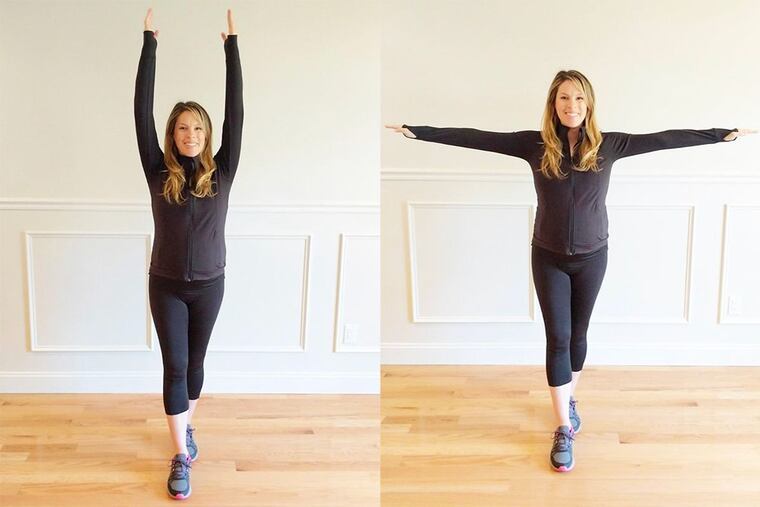A grandparent’s fitness guide for keeping up with your grandkids
Improving your balance and stability is simple if you have the right toning tools. Here are a few stability-strengthening exercises every grandparent needs.

Is your body ready for grandkids? If you spent a considerable chunk of your youth raising your children, you know how much time, energy, and precious sleep you’ve sacrificed to ensure they were safe, sound, and ready to successfully take on the world. And just as you’re soaking up the joys of being an empty nester, your children share the exciting news that you’re going to be a grandparent!
Many grandparents get to enjoy such perks as lining kids’ pockets with sweet treats, playing, cuddling, and — best of all — handing them back to their parents just in time for the tantrums to kick in. Time with grandchildren also improves mental health, as it’s linked to stronger cognitive skills and enhanced mood. But the physical stress can be considerable for an aging body when you consider the physical demands of lifting and lowering a small child, as well as keeping up with that rambunctious pace.
In order to stay healthy and active as a grandparent, you need joints, muscles, and an immune system that are prepped, primed, and protected. This is especially true at the moment, as many grandparents are helping babysit little ones while their own children are busy working remotely.
For grandparents who are full-time parents to their grandkids, taking time for yourself may seem impossible, but small breaks for fitness can pay off big.
Here are some quick tips to help boost your strength, stamina, and safety while tending to tiny tots:
Getting around germs. Children have a knack for picking their noses and dirty things off the ground. Forget about social distancing for toddlers. For a child, all this might end in a case of the sniffles. But older adults rarely bounce back as quickly from these germs and subsequent illnesses. These steps can reduce your risk of getting sick:
It’s safe to say that COVID-19 has instilled in all of us the necessity of being an avid hand-washer. But don’t just limit your sick-fighting suds to your hands. One of the many great things about grandkids is their cozying up with hugs and kisses, leaving droplets of drool on your face. After spending time together, wash all the parts of your skin that may have come into contact with these cutie cooties.
If your grandchild is feeling under the weather, reschedule your time together. If you must see one another, limit exposure by setting up the play and sleep area near you, rather than on you.
Limit your lifts. It’s easy to forget just how heavy babies and toddlers can be. Not to mention the awkward ways that we lift them from such low places as cribs or strollers. Being mindful that your lifting technique can go a long way in protecting your lower back from injury.
If your grandchild is too heavy to carry, consider investing in a baby carrier device. These wraps and packs are easy to put on and adjust to your needs, and they are lifesavers when it comes to alleviating and properly redistributing your grandkid’s weight.
For other times when a carrier isn’t convenient, or in your budget, remember to always squat down and lift from your lower body, not your back.
Build your balance. Balance is one of those fitness factors we often undervalue until we experience a fall. As your body matures, a stumble or trip (maybe on a child’s misplaced toy) can have catastrophic consequences that jeopardize not only your safety but your independence, as well. Luckily, improving your overall stability is simple if you have the right toning tools. Here are a few stability-strengthening exercises every grandparent needs:
*Always stand near a sturdy chair or wall for safety and support. For best results, practice these exercises two to three times each week.
Stork stance progression
Beginner: Hold the back of a chair or wall as you slowly elevate one leg off the floor. Try to hold for 10 seconds then switch sides.
Intermediate: Try going hands-free. Hold your arms out to your sides as you carefully lift one leg off the floor. Hold for 10 seconds then switch legs.
Advanced: Close your eyes as you lift one leg off the floor. Hold for five seconds. Repeat on the other side. If at any point you feel unstable, simply open your eyes and put your foot back down.
Around the clock progression
Beginner: Reduce your center of gravity by standing with your feet together. Raise your arms up overhead, out to your sides, then in front. Repeat 10 times.
Intermediate: Place one foot in front of the other to form a straight line from heel to toe. Now follow the same arm pattern of up, out to the side, and to the front. Repeat eight times.
Advanced: Close your eyes and perform the above arm sequence five times. If at any point you feel dizzy or unsteady, open your eyes.
Grapevine
Start by standing with feet shoulder width apart.
Slowly cross your left foot over your right, then step your right foot out so your legs are parallel. Now step your left foot behind your right. Continue this sequence for 10 counts then move in the reverse direction another 10 times. For an added challenge, increase your speed.
Ashley Blake Greenblatt is a certified personal trainer and wellness coach in South Jersey. To learn more about her virtual training program, go to ashleyblakefitness.com.